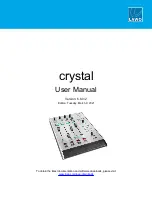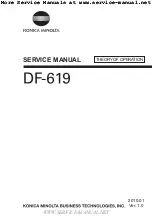
3
Using the Scope Functions
72
Agilent U1602A/U1604A User’s and Service Guide
Auto Trigger Mode
The Auto trigger mode displays a waveform when the trigger conditions
are met. If the trigger conditions are not met, it forces the instrument to
trigger.
In Auto trigger mode, the instrument operates by first filling the
pre- trigger buffer. It continues to flow data through this buffer while
searching for a trigger and updates the pre- trigger buffer. After a trigger is
found, the pre- trigger buffer will contain the events that occur just before
the trigger. If no trigger is found, the instrument generates a trigger and
displays the data as though a trigger had occurred. The indicator of the
trigger mode and status are shown at the trigger status line at the right
column of the display (refer to “
50”).
Normal Trigger Mode
The normal mode displays a waveform when the trigger conditions are
met, otherwise the instrument does not trigger and the display is not
updated. If you press RUN when the instrument is in Normal trigger
mode, a trigger must be detected before an acquisition can complete.
In Normal trigger mode, the instrument must fill the pre- trigger buffer
with data before it starts to search for a trigger event. While searching for
the trigger, the instrument updates the pre- trigger buffer. After a trigger is
found, the oscilloscope will fill the post- trigger buffer and display the
acquisition memory.
In many cases, a triggered display is not needed to check for signal levels
or activity. For these applications, use Auto Trigger mode (default setting).
Use Normal trigger mode only if you want to acquire specific events as
specified by the trigger settings.
Single Trigger Mode
When you select the Single trigger mode, the instrument will fill the
pre- trigger buffer memory. It continues to flow data through the
pre- trigger buffer until the auto trigger overrides the searching and forces
a trigger. At the end of the trace, the instrument will stop and display the
results.
















































